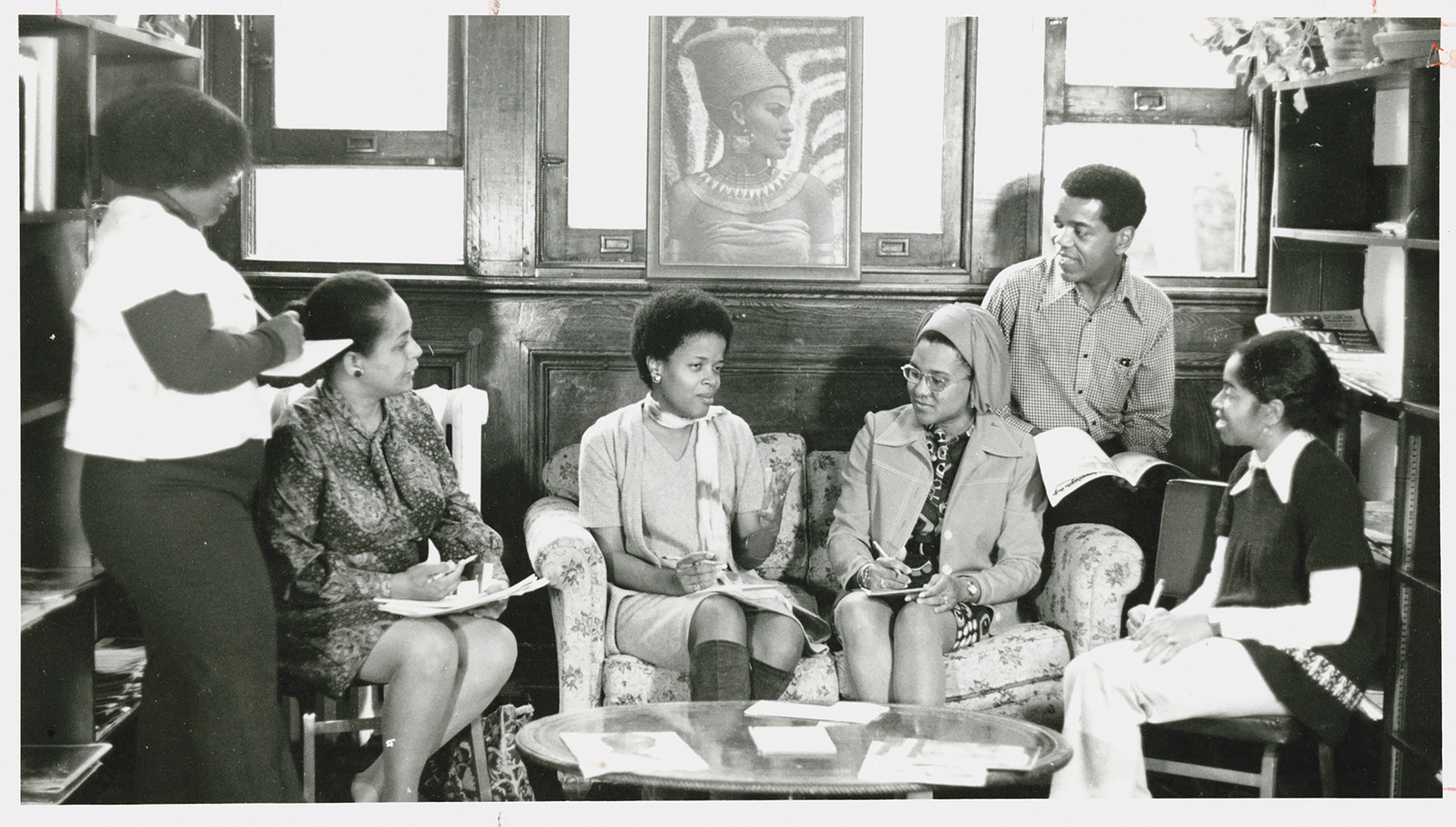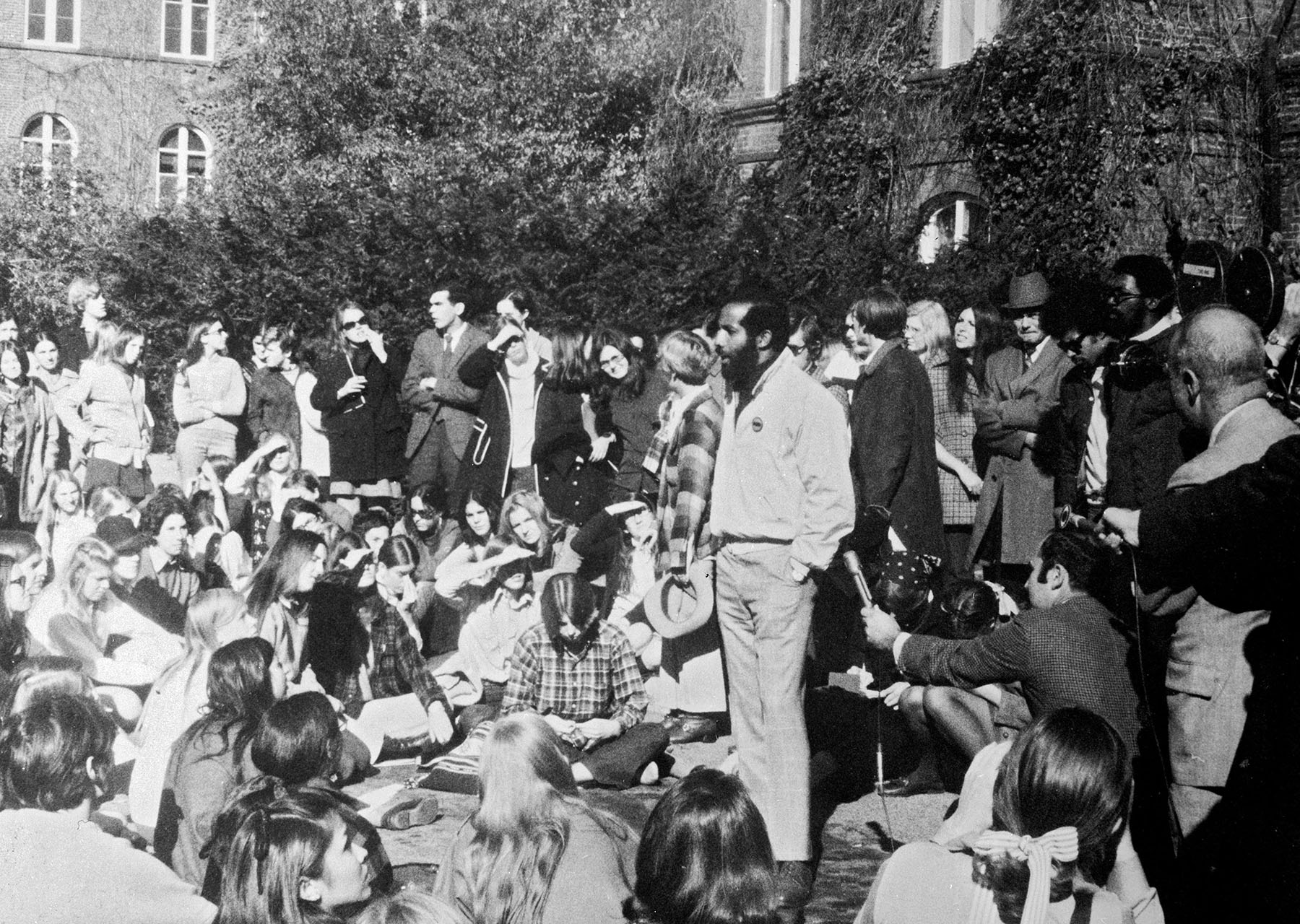Vassar’s Inclusive History Project Taking Steps Forward
Vassar’s Inclusive History project, an initiative launched last year to tell the College’s story more fully and honestly, has been gaining some momentum lately. “We are doing this the Vassar way,” said College Historian Ronald Patkus. “It’s not one person collecting information and disseminating it to the rest of the community, but rather a collaborative effort involving students, faculty, and administrators in a wide range of projects and activities, and that’s a wonderful way to do things.”

Shortly after the initiative was launched, several students signed up for specialized “intensive” courses aimed at spotlighting attitudes about race and racist activities that were evident throughout Vassar’s history. One group of students examined photos from the Wolven Glass Plate Collection that documented racial masquerade – including students in blackface – at Founders Day and other events from shortly after the College’s founding well into the 1950s.
One student enrolled in that class, Edward Welch Morgan ’26, said acknowledging such behavior was an important step toward addressing it. “We all have a collective responsibility to comprehend and repair our past wrongs, so it’s crucial that the Vassar community engage in efforts like the Inclusive History initiative," Morgan said.
Four other students chronicled the impact of the Rev. Howard Thurman, a noted Black clergyman and mentor to Martin Luther King, Jr. and other civil rights activists, who delivered sermons in the Vassar chapel in the 1930s and 1940s. His daughter, Olive Thurman ’48, was one of the first African Americans to attend Vassar.

More recently, a Vassar administrator and a faculty member have embarked on oral history projects involving African American alums and others in the Vassar community. During the recent Triennial celebration of the African American Alumnae/i of Vassar College (AAAVC), Wesley Dixon, Deputy to the President and Secretary of the Board of Trustees, hosted an “Oral History Video Booth” for AAAVC members who wished to talk about their Vassar experience on camera. “These reflections included memories about participants' social, academic, and extracurricular experiences at Vassar and provide rich context for the range of experiences of Black alums over several generations,” Dixon said. “These conversations will be compiled into several videos that collate the reflections of participants in the project.”
Professor of Sociology and Director of Africana Studies Diane Harriford has also embarked on a video project that she envisions will include oral histories not only from Black Vassar alums but also from others who have worked on the campus. She has already enlisted the help of one student for the research project and may design an “intensive” course if a sufficient number of students are interested.
Harriford said she was particularly interested in hearing from Black alums who were among the first men to enroll at Vassar in the early 1970s. “I am still attempting to determine who they were and will then seek to interview them,” she said. “But we also need to hear from others who were on campus, those who worked on the grounds or in the kitchens.”
Harriford said oral histories can often be more revealing than written interviews because people often recall incidents they had previously forgotten when they are engaged in informal conversations. “It’s a skill of the interviewer to understand when that happens and say, ‘Let me ask you more about this,’” she said.
A course that was offered last year by Assistant Professor of History Ashanti Shih has generated the first Inclusive History project involving Asian Americans. Students enrolled in a course on Asian American social movements combed Vassar’s Special Collections library and The Miscellany News for stories about Asian Americans throughout the College’s history. Most of the students have since graduated from Vassar, but they are still in contact and working on a compilation of their findings. “The idea was to start exploring the history of the Asian presence at Vassar,” Shih said. “It was a chance for us to take a first look at what was in the archives.”
Shih said the students discovered that Asian and Asian American students have had a lengthy presence on campus. One Japanese student who came to the United States as part of a diplomatic mission, Sutematsu Oyama, was a member of Vassar’s Class of 1882, she noted.
All of this new work— the two oral history projects and the examination of Asians and Asian American presence on campus—are expected to join material that has already been placed on Vassar’s new Inclusive History website.
Ella Phillips ’25, one member of Shih’s class who is helping to compile the information on Asians and Asian Americans at Vassar, said she was grateful that the work would be permanently preserved on the site. “I took the class because I didn’t know much about Asian American history,” Phillips said. “We all realize this is not the comprehensive story, but it’s a starting point that can be added to with more contributions (on the Inclusive History website) from other students in the future.”